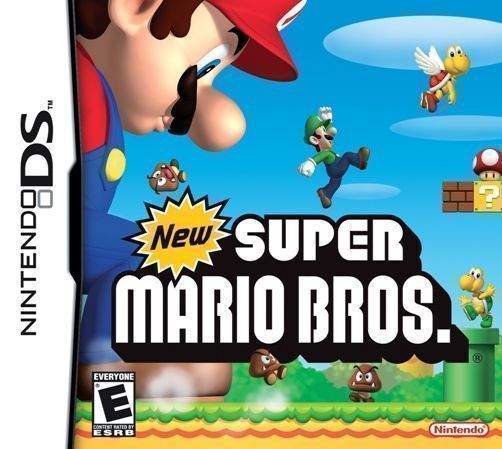
The size of this Super Mario Bros 3 (PRG 0) (MR207 Hack) Emulator/ROM is just 217.8KB only and around 4362 people already downloaded and played it. In the two-player mode, both players can choose to work together or work against each other and enjoy. Control Mario or Luigi in order to punch the enemies coming out of pipes from below to turn them over and then defeat them. It’s the first game that used Mario in the title. Is an action game released by Nintendo in 1983.
This version is from the Nintendo VS.SYSTEM, and the positions of enemies and items differ from the Nintendo Entertainment System (NES) version. Mario and Luigi must go on a widespread adventure in order to rescue Peach from the clutches of Bowser. Is an action game released in 1986 by Nintendo. Fall - Development started at the same time as The Legend of Zelda, after Devil World and Excitebike were finished.
February 28th - Planning sheet is drawn up containing various Donkey Kong Jr. February 20th - Specification describing the mechanics of how becoming big would work is written. February 5th - An early control scheme is designed. Unknown Date - Specifications for Mario riding around in a cloud and rocket are drawn up. The arcade game then received a wide international release for overseas markets outside of Japan in February 1986, initially in the form of a ROM software.
July 19th - World 1-1 is finished around this time. June 27th - A draft of an early green title screen is drawn up. March 8th - Another planning sheet is created, possibly made for level planning.
May 15th - Game released for the Nintendo Entertainment System in Europe.Originally, Super Mario Bros. February 21st - Game released for the Famicom Disk System. The exact date for the release is unknown. October - Game released for the Nintendo Entertainment System in the USA. September 13th - Game released for the Famicom. August 12th - Game was likely finished around this time according to the SMAS partial source code leak.
Later on, the screen became side-scrolling and eventually gained its bright blue background. At this early stage of development, the game was on a dark single non-scrolling screen and the player wasn't even able to jump. A rectangle that measured 16 pixels wide and 32 pixels tall, which was obviously just a placeholder until the actual player character was designed.

Mario could carry weapons, with a rifle and a "beam gun" being usable. The game focused far more on shooting enemies than platforming tasks. Designing a new theme with this in mind eventually led to the iconic theme we all know and love today. After later playing the game again, he realized this did not match Mario's movement and jumping. This rich scenery led to him creating an early theme which he describes as being lazier, laid-back, slow, and carefree.
Various elements from Donkey Kong, Donkey Kong Jr, and Mario Bros. Instead of scrolling continuously, the game's environments scrolled screen-by-screen, similarly to Super Mario Bros. The sky-based bonus rounds of the final game are apparently a remnant of this idea, though Super Mario Land used the original idea for its final stage. These levels consisted of Mario riding a rocket and shooting enemies amongst the clouds. The game had sky segments in addition to the ground segments which ended up being used.
The evidence supporting this is an early sales brochure for the arcade VS. At one point, the title Mario's Adventure seems to have been considered for the game in place of Super Mario Bros., at least for the U.S. The original version of the ending theme was later used for the Famicom Disk System version of Super Mario Bros.: The Lost Levels. Koji Kondo originally composed the ending theme with an AABA structure, but since the song would take up too much memory, the "B" portion was cut.
As evident by the font not having a drop shadow and the alternate World 4-2 warp zone, which contain the two pipes leading to Worlds 7 and 8 ( VS. The screenshots appear to be from the original console version rather than VS. This version of the brochure features original artwork on the front side, with a description of the game and screenshots on the back. Mario's Adventure instead of VS.
Copyrights Office with the same register number used for Super Mario Bros. The backside of the revised brochure is pretty much identical, except every instance of Mario's Adventure has been replaced with Super Mario Bros.This theory is further supported by the fact that the title Mario's Adventure is registered in the U.S. A later version of the sales brochure uses the finalized title of the game, with the packaging artwork used for the Famicom version on the front in place of the original art (which seems to suggest that the earlier flyer was made before the game was even released in Japan) and the tagline edited to reflect the title change.
↑ 8.0 8.1 Iwata Asks: New Super Mario Bros. 25th Anniversary - Interview with Shigeru Miyamoto #1 - Youtube, Dec. ↑ Nintendo NY 2015 - Nintendo World Report, Feb. ↑ Super Mario Bros Development Files - Gamingalexandria, June 16th, 2019 ↑ Iwata Asks: Super Mario 25th Anniversary, Vol. ↑ 2.0 2.1 2.2 2.3 2.4 2.5 2.6 Iwata Asks: Super Mario 25th Anniversary, Vol.
30th Anniversary Interview - Youtube, Sept. ↑ Koji Kondo – 2001 Composer Interview - game maestro vol. ↑ Super Mario History 1985-2010, - Internet Archive, Nov.


 0 kommentar(er)
0 kommentar(er)
